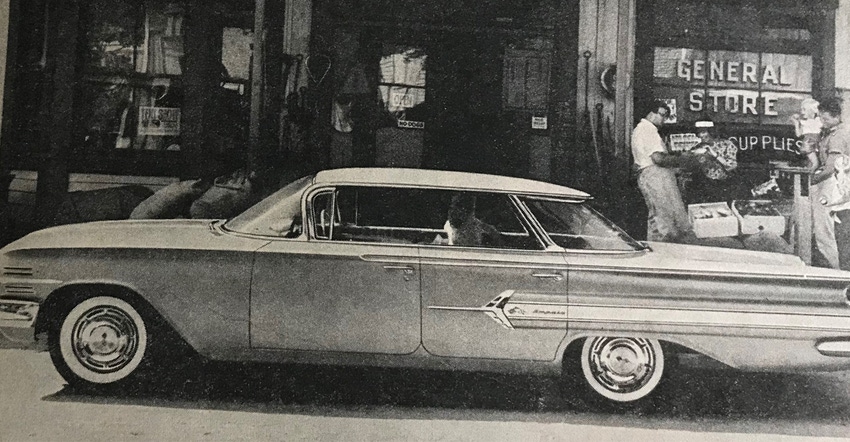March 4, 2020

I remember hearing a classroom speech from a visiting reporter when I was in high school that described a newspaper as a “time capsule” of the day it was printed.
You can pick it up 40 years later and find out not only what the news of the day was, but also what the price of car or a pound of hamburger was that day. You can look at the pictures to see what fashions were in style, or thumb through the ads to see what products were popular. You can learn who got married and who died that day.
I often search through old bound volumes of Kansas Farmer when writing this column, and recently I came across an ad that says it all for 1960. The classic Chevrolet Impala four-door sports sedan parked in front of the general store. Kind of makes you want to sing “See the USA in your Chevrolet” doesn’t it?
65 years ago
Leather was a major industry in the U.S. back in 1955. Hides and skins were the most valuable byproduct of the livestock enterprises and accounted for a significant share of the profit margin.
Leather was a $4 billion industry in the U.S. at the time, and it employed more than 350,000 people to make shoes, belts, handbags, wallets, clothing, furniture and more.
45 years ago
Corn borers were becoming an increasing threat on irrigated corn acres in south-central Kansas in 1975, with estimated losses of $3.5 million. Kansas State University researchers were advising farmers to plant early in high-population rates and to use early maturing varieties to reduce losses.
Researchers also warned of the high risk that southwestern corn borer larvae would overwinter in corn stalks, with adults emerging to lay new eggs beginning in May.
30 years ago
Restrictions were being put in place on the use of atrazine after the popular herbicide was found in amounts above safe drinking levels in some Kansas lakes and rivers.
K-State Extension specialists advised farmers to incorporate atrazine whenever possible to avoid surface runoff. They also recommended switching to a post-emergence application early in the growing season to reduce rates and facilitate faster dissipation.
20 years ago
The rapid pace of consolidation had some farmers concerned about the future as a new century began. Michael Moskow, president of the Chicago Federal Reserve Bank, noted that there were 6.5 million farms in 1935. By 2000, there were only 2 million.
Much of the consolidation, which continues today, has been driven by technology. In the 1960s, it was irrigation and commercial fertilizer. By 2000, it was GMO seed. New technology lowers unit costs and boosts production, which in turn causes a surplus and commodity prices drop.
Moskow said mid-sized farmers faced a dilemma: get bigger to raise the revenue to continue investing or get smaller to require less manpower ad enable some family members to work off the farm.
Goerzen is Executive Director of Old Cowtown Museum. She writes from Wichita.
About the Author(s)
You May Also Like




